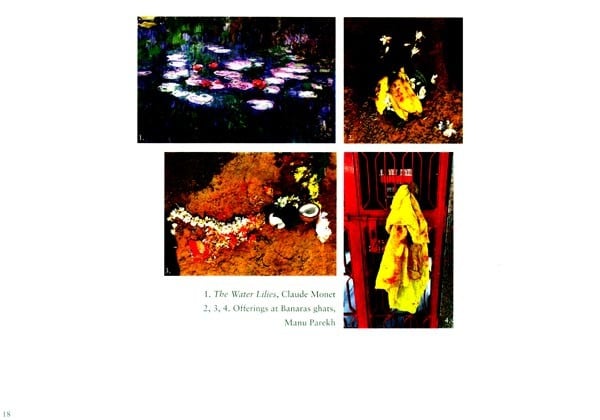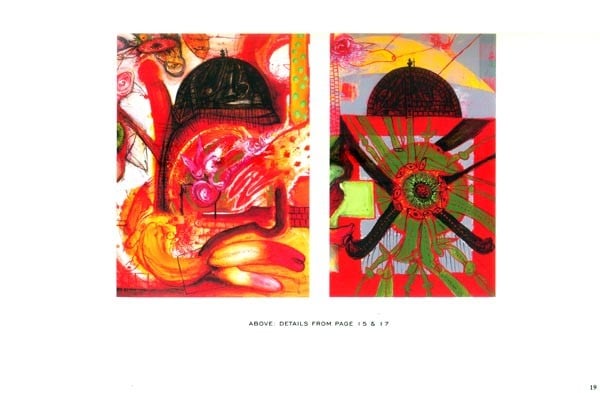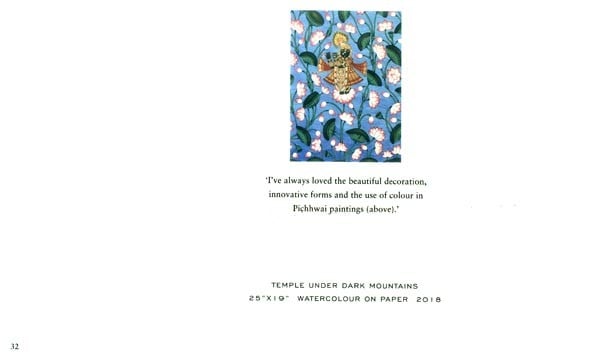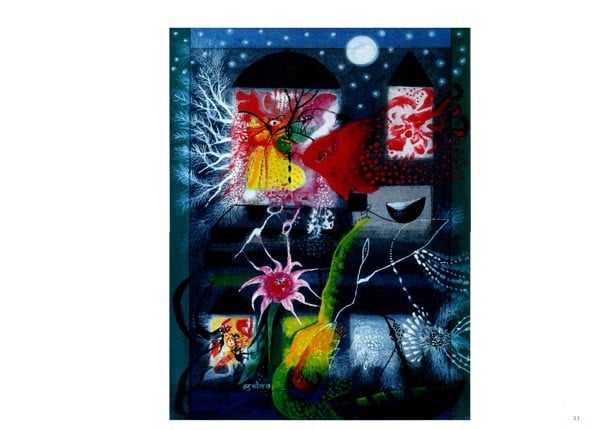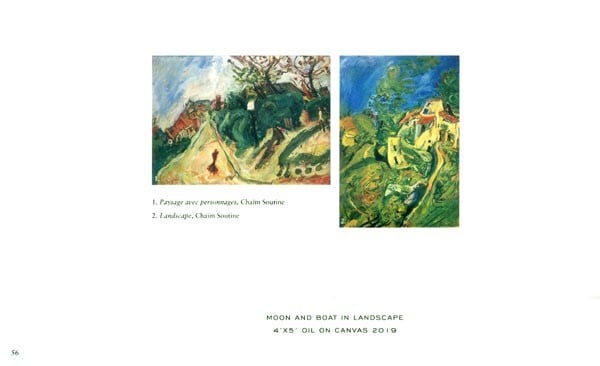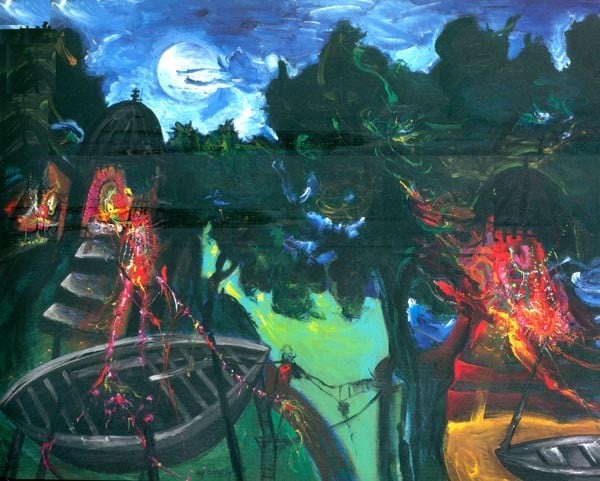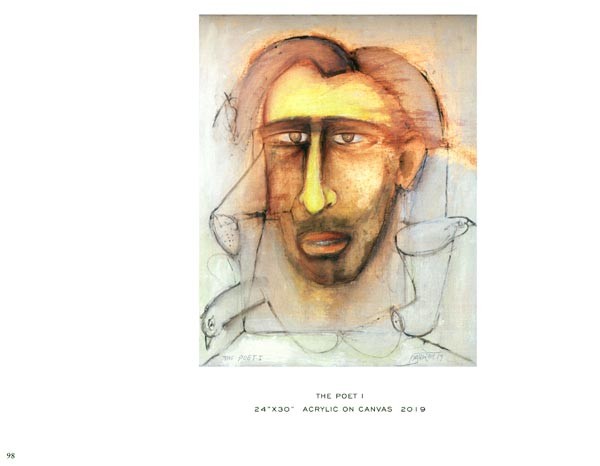
Recent Paintings By Manu Parekh (A Pictorial Book)
Book Specification
| Item Code: | NCZ062 |
| Author: | Manu Parekh |
| Publisher: | Aleph Book Company |
| Language: | English |
| Edition: | 2019 |
| ISBN: | 9788194233756 |
| Pages: | 104 (Throughout Color Illustrations) |
| Cover: | HARDCOVER |
| Other Details | 13.00 X 10.50 inches |
| Weight | 1.19 kg |
Book Description
The paintings evince the variety of influences that have informed Parekh's oeuvre through the years: nature, worship and ritual, theatre and film, and the work of other seminal artists as well as his own previous works. Parekh returns to beloved places, themes, artists and creations, infusing each of the paintings with new energy and depth.
As Jeet Thayil says in the introduction, 'Some artists repeat the success of their mature year’s ad infinitum .... Then there are those who deepen and mix up the work, charging it anew.... Manu is among the select latter group.'
He enjoys to the fullest what he likes best-painting.
We continue to enjoy the freedom and excitement of his art.
I asked Manu about 'late style'. Did he feel he had less to prove to himself and to the world?
'There is vanity to prove, and freedom from history.'
Vanity can save your life. It gives you the kicks you need to keep making even when there's nothing left to prove, and no one left to prove it to, when the artists with whom you've been having conversations in your head, and in real time, like Souza, are dead. These new paintings were made after his 2018 career retrospective at the atonal Gallery of Modern Art. Say again: immediately following a retrospective of sixty years of work, Manu Parekh makes forty-two paintings in a single year, many of them a distillation of everything he has done in his working life. This is late style.
Some artists repeat the success of their mature years ad infinitum into old age. I'm thinking of Raza, say, or Rothko, who worked in one medium on one project that developed over the years but never changed its premise. Then there are those who deepen and mix up the work, charging it anew, experimenting until the very last brushstroke or until the moment they are unable to hold a paintbrush and must use scissors, like Matisse at the end, producing massive cut-outs energized by the vitality and joy of movement that were denied to the artist by his own advanced and advancing limitations.
Manu is among the select latter group-a risk-taking crew for whom no achievement is set in stone, and there's no success like failure. In his new work, he catechizes his own inventions, seemingly unimpressed by past toil, and by the labors of the artist as a younger man. If late style is a fusion of the raw and the cooked, it is also the result of man-hours and discipline; and if there is spontaneity and improvisation-of which these works are full-they are by-products rather than the guiding force.
What I see in Manu's latest late style is rawness at the service of technique, and I see the kind of arrogance that comes from having nothing to prove to anyone except the voices in your head, the kind of confidence that cannot be bought or faked. The speed comes from working every day, and obeying the spasms of body memory, and being unable to wind down when the deadline has passed. He goes on to the next one, and the next. He makes a painting faster than before, having acquired the enigmatic velocity that can only be distilled from a lifetime of experience, which, too, is a prerogative of late work.
Look at the monumental heads. What do they say, those stunned, disbelieving, unready faces out of the Old Testament, suffering torments so holy their bodies are transformed into timelessness, pointing back at the essence of things? Suffering transcends time and place. It makes sense to all ages. It is the one thing ancient man and future man has in common.
'You can't buy pain,' he told me, 'or pleasure. These things you can't fake.'
Look again at the Christ heads-some gaunt Indian Jesus looming powerlessly against a net of crude geometric scrawls, some Jesus in the guise of an Indian holy man, homeless or hallucinating, beset by images of a former life in which he was clothed and loved and served at tables set with bounty, the kind of face you see a hundred times a day in Calcutta or Banaras or Bombay. Look again, and what you find is freedom from the pinpricks of local history. You find the naive native genius of the Indian village filtered through its wall drawings, but also you find the fearful calamities of the Bible, the apocalyptic and the magical on one page.
'When I paint a head, I'm not painting a head. I approach it from an actor's point of view.
I don't paint the face, I paint the expression.'
Book's Contents and Sample Pages
